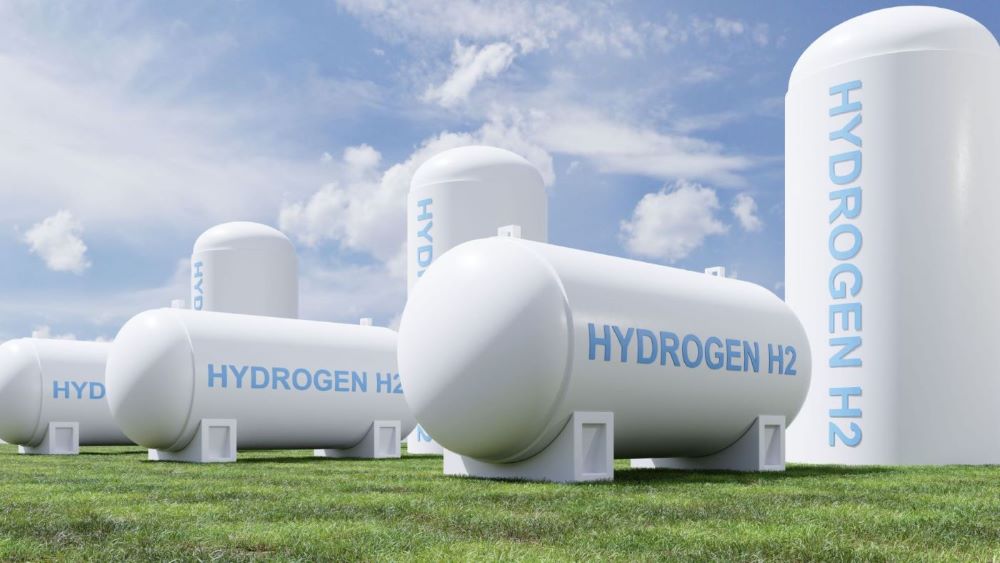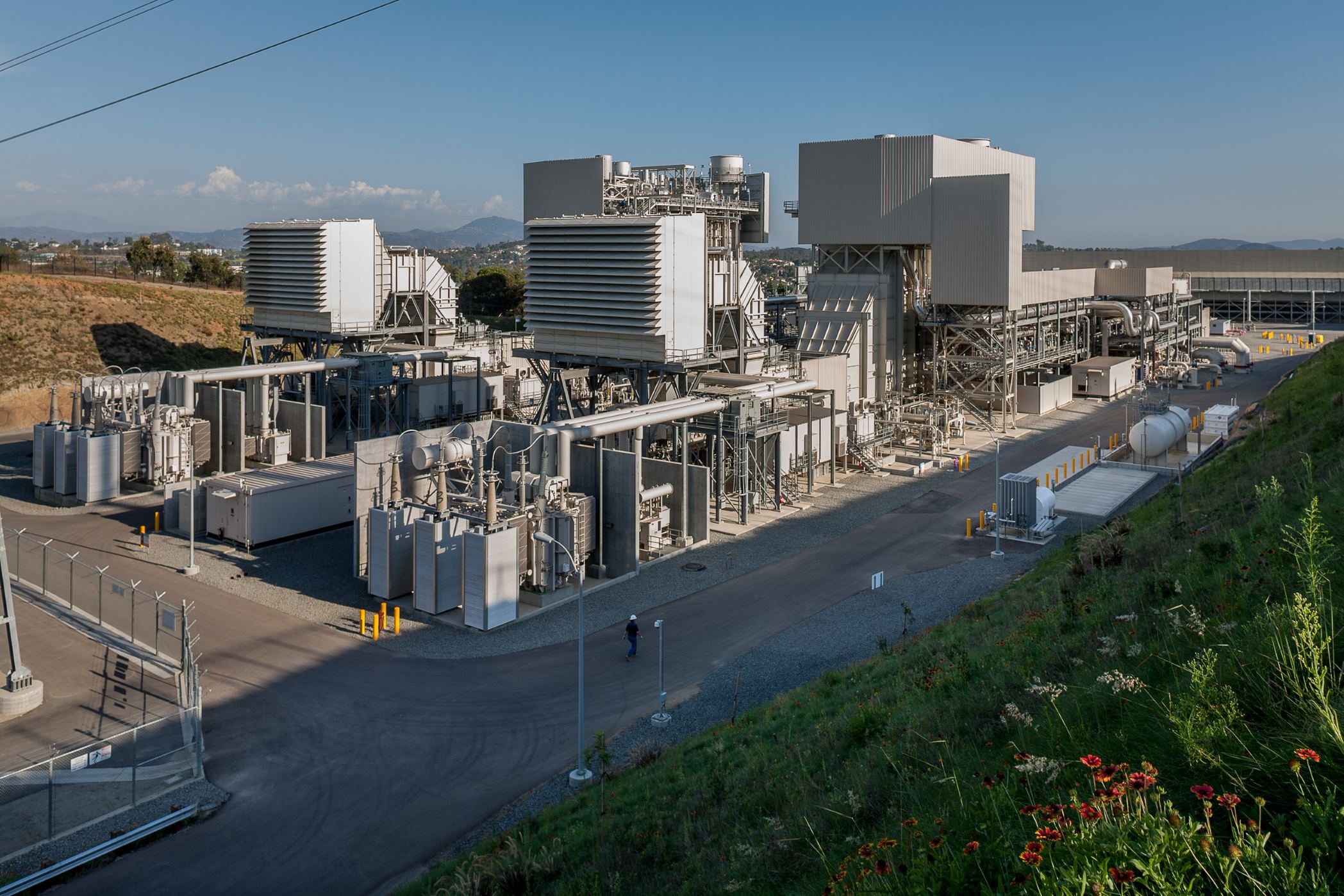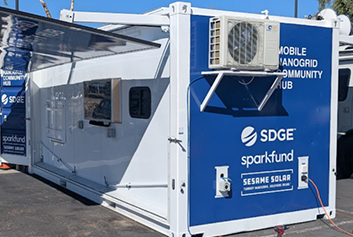Hydrogen Innovation
SDG&E is committed to studying how clean hydrogen can help us meet California’s clean energy goals and ensure safe, reliable, and decarbonized energy for tomorrow.

Hydrogen — Enabling Our Low Carbon Future
Clean fuels like hydrogen can help reduce greenhouse gas (GHG) emissions in the electric sector, gas sector, and transportation. Specifically, at SDG&E, we are exploring the potential of clean hydrogen to help California achieve net zero GHG emissions by 2045. As part of our sustainability strategy, SDG&E is exploring hydrogen use for net zero power generation, gas system blending, vehicle fueling, and resiliency.
Today, SDG&E is producing clean hydrogen via electrolysis at Palomar Energy Center for multiple uses: to blend with natural gas for power generation, for use as a cooling gas, and to fuel hydrogen vehicles in its fleet. The company is also collaborating with the University of California San Diego to advance a hydrogen blending pilot to study the impact of blending up to 20% clean, renewable hydrogen with natural gas in the pipeline. The research will help SDG&E and others understand the effects of blended gas on existing infrastructure, informing a future hydrogen blending standard for California’s natural gas system.
Hydrogen at SDG&E
The SDG&E Path to Net Zero: A Decarbonization Roadmap for California identifies how California can reach its clean energy goals by 2045. The study found a need for up to 20 GW of hydrogen-based power generation in California, as well as large volumes of hydrogen for transportation and blending with natural gas.
Through pilot projects, SDG&E aims to develop and implement real-world demonstrations that expand our hydrogen operating experience and expertise and serve our customers with clean energy. All SDG&E hydrogen projects to date utilize hydrogen produced via electrolysis of water.

UC San Diego — Hydrogen Blending
In March 2024, SDG&E, along with three other California utilities, submitted a proposal to the California Public Utilities Commission (CPUC) to develop a series of projects to study blending clean hydrogen into the natural gas system. If approved by the CPUC, the project will study the impact of hydrogen-blended natural gas (up to 20%) on infrastructure materials common to the natural gas distribution system. The application was filed as part of a joint application with Southern California Gas Company, Pacific Gas and Electric Company, and Southwest Gas Corporation to test hydrogen blending in natural gas systems. The research will help the joint utilities understand the effects of blended gas on existing infrastructure.
Palomar Energy Center — Electric Generation and Fleet Fueling
At our Palomar Energy Center in Escondido, an onsite electrolyzer and solar panels are now producing hydrogen for use as a cooling gas in the combined cycle process, blending it with natural gas for electric generation, and to fuel the first hydrogen vehicles in our fleet.


SDG&E’s first mobile, emission-free nanogrid
In 2024, SDG&E acquired a containerized and mobile “nanogrid” unit that embodies the future of sustainable energy solutions for resiliency and emergency response. The standalone nanogrid system is designed to help SDG&E support communities by responding to emergency climate events such as wildfires and Public Safety Power Shutoffs (PSPS), and is an emission-free alternative to diesel backup generators. The unit is equipped with a solar canopy, batteries, and a novel hydrogen system that includes a small electrolyzer and ultra-safe solid-state hydrogen storage. It can power electric vehicles, charge phones and other devices, and even generate clean drinking water from moisture in the air. This program is funded by California utility customers under the auspices of the California Public Utilities Commission.
Hydrogen 101
Hydrogen is the simplest and most abundant element in the universe. On Earth, hydrogen is rarely found in its pure form; instead, it’s typically found in compounds such as water (H2O) or fossil fuels like methane (CH4).
For decades, hydrogen has been used as a chemical feedstock in industrial applications, manufacturing, and technology operations, including the production of ammonia for agriculture and oil refining. But hydrogen is also a carbon-free energy carrier, which means that it can store, move, and deliver energy. When used as a fuel, its only byproduct is water vapor.
Currently, most of the hydrogen used today comes from natural gas as a feedstock that undergoes a chemical process called Steam Methane Reformation (SMR). This hydrogen production process releases carbon dioxide (CO2) as a byproduct.
However, hydrogen can also be produced through other “clean” pathways, for example using water as a feedstock. A process called electrolysis uses electricity to split water (H2O) into pure oxygen and hydrogen. When clean electricity (such as solar or wind) is used, the process can be completely carbon-free.
Hydrogen gas can be stored in pressurized containers, such as small cylinders or large tanks, in pipelines, or even underground in specialized geologic formations. Like natural gas, hydrogen can be stored in large volumes for long periods, which makes it an excellent tool for supporting energy resiliency.
More Information
Contact us at hydrogen@sdge.com. Learn more about Hydrogen-Fueled Fleets for Business.
Want to learn more about hydrogen technology? Check out these third-party resources:
